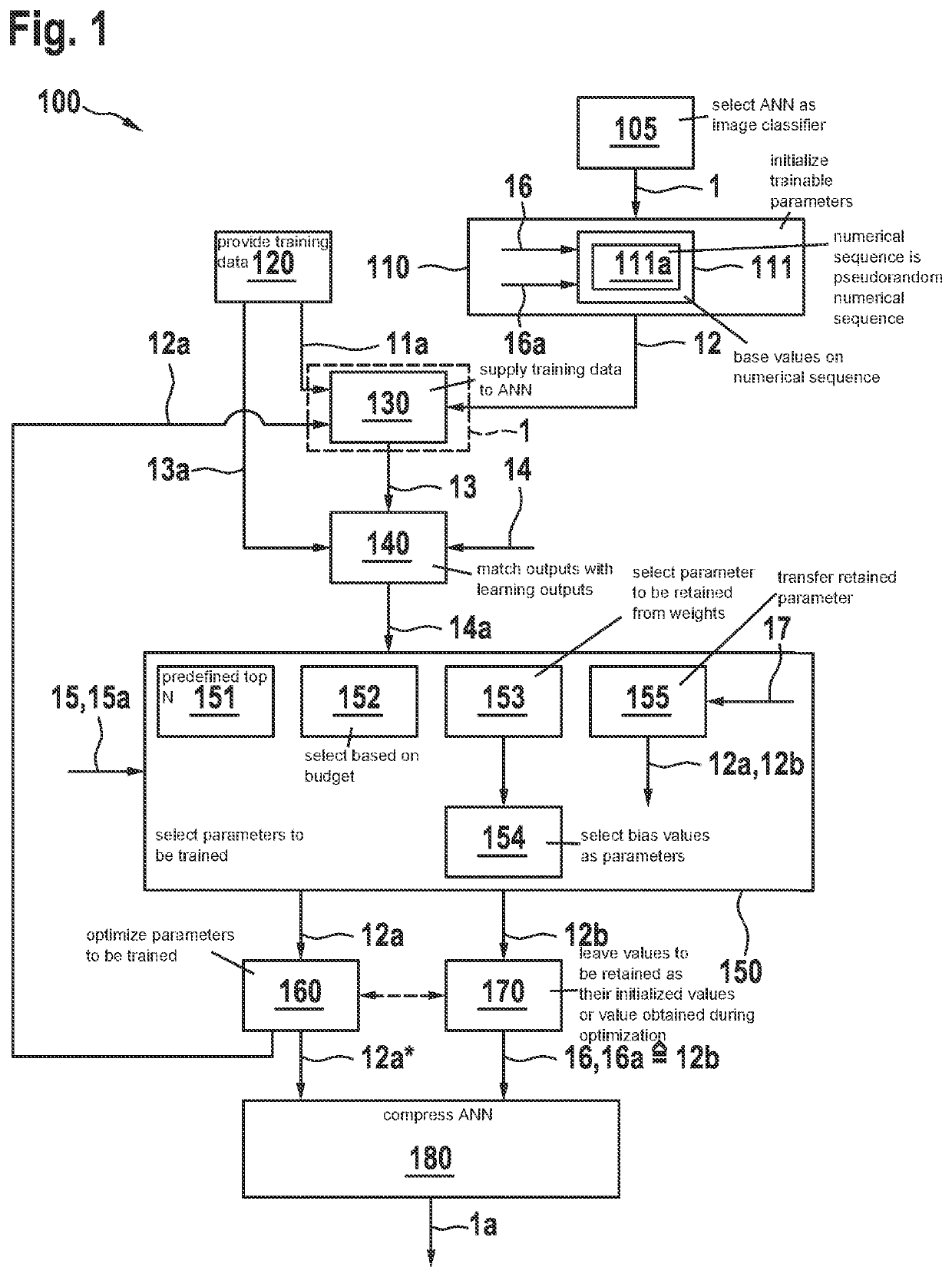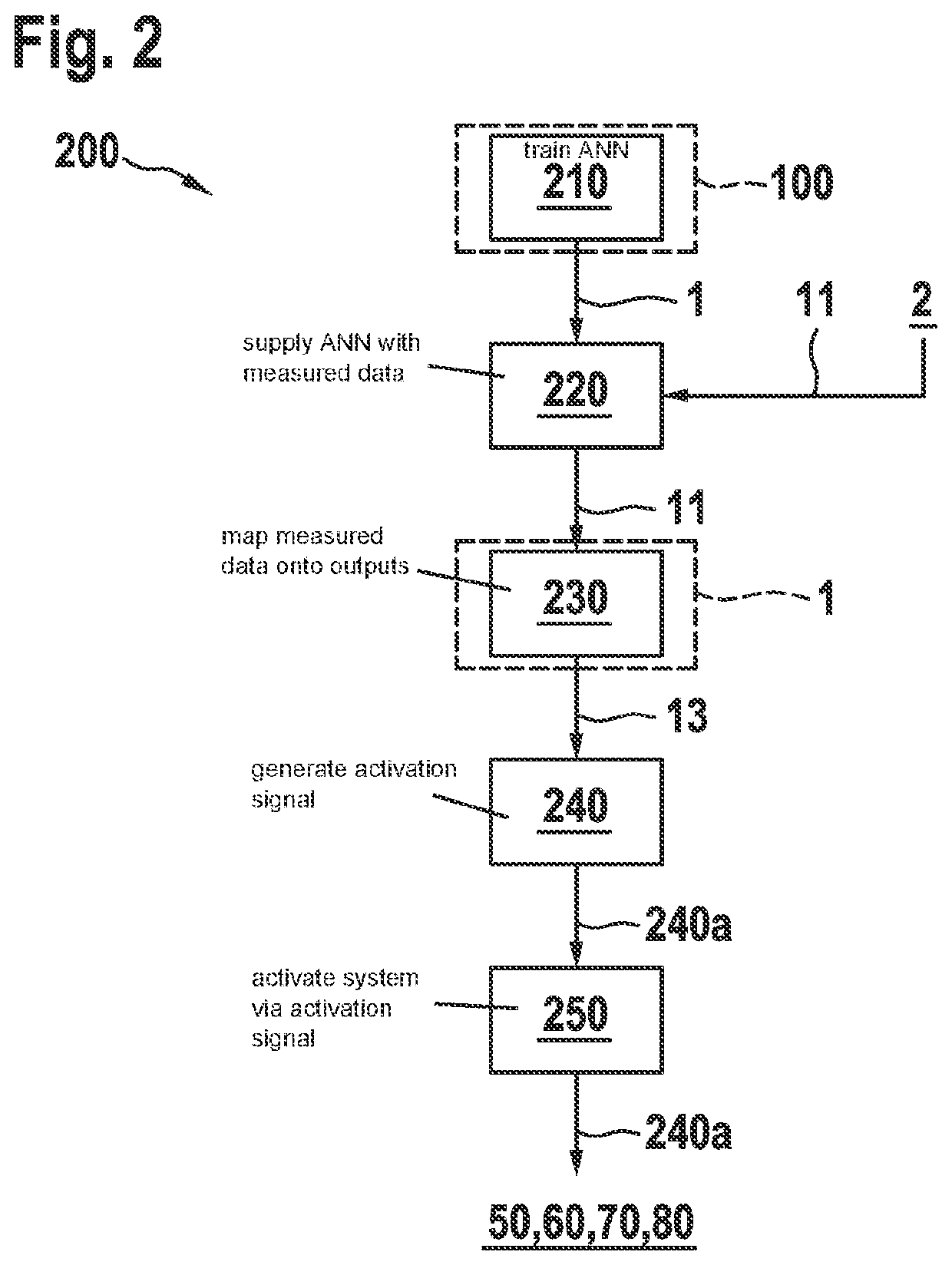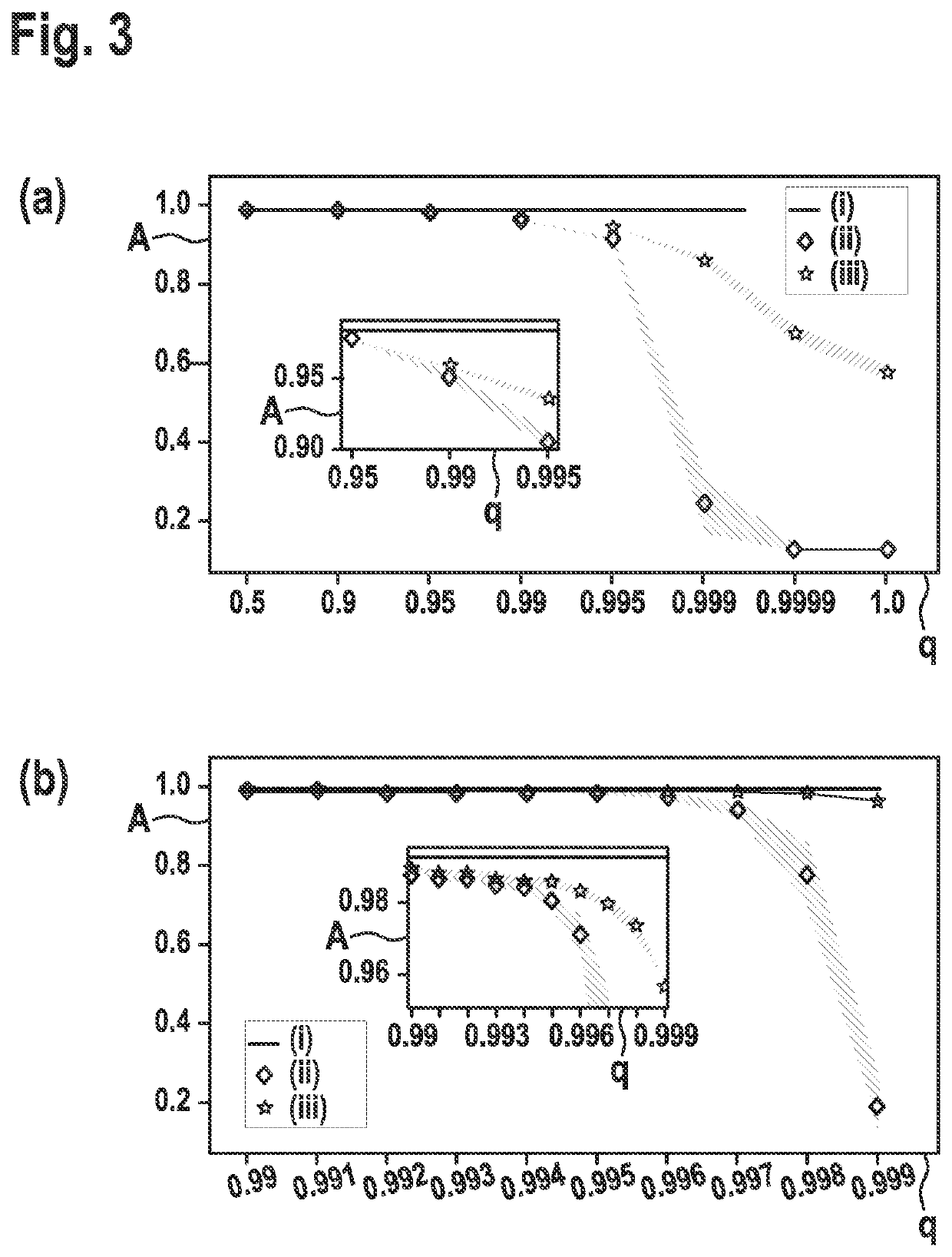Energy- and memory-efficient training of neural networks
a neural network and energy-efficient technology, applied in the field of neural network training, can solve the problems of affecting the progress of training measured via the cost function, consuming considerable energy, and affecting the efficiency of training, so as to achieve meaningful outputs from measured data more quickly, improve training as a whole, and save computational effort
- Summary
- Abstract
- Description
- Claims
- Application Information
AI Technical Summary
Benefits of technology
Problems solved by technology
Method used
Image
Examples
Embodiment Construction
[0044]FIG. 1 is a schematic flowchart of one exemplary embodiment of method 100 for training ANN 1. An ANN 1 designed as an image classifier is optionally selected in step 105.
[0045]Trainable parameters 12 of ANN 1 are initialized in step 110. According to block 111, the values for this initialization may be based in particular, for example, on a numerical sequence that delivers a deterministic algorithm 16, proceeding from a starting configuration 16a. According to block 111a, the numerical sequence may in particular be a pseudorandom numerical sequence, for example.
[0046]Training data 11a are provided in step 120. These training data are labeled with target outputs 13a onto which ANN 1 is to map training data 11a in each case.
[0047]Training data 11a are supplied to ANN 1 in step 130 and mapped onto outputs 13 by ANN 1. The matching of these outputs 13 with learning outputs 13a is assessed in step 140 according to a predefined cost function 14.
[0048]Based on a predefined criterion ...
PUM
 Login to View More
Login to View More Abstract
Description
Claims
Application Information
 Login to View More
Login to View More - R&D
- Intellectual Property
- Life Sciences
- Materials
- Tech Scout
- Unparalleled Data Quality
- Higher Quality Content
- 60% Fewer Hallucinations
Browse by: Latest US Patents, China's latest patents, Technical Efficacy Thesaurus, Application Domain, Technology Topic, Popular Technical Reports.
© 2025 PatSnap. All rights reserved.Legal|Privacy policy|Modern Slavery Act Transparency Statement|Sitemap|About US| Contact US: help@patsnap.com



